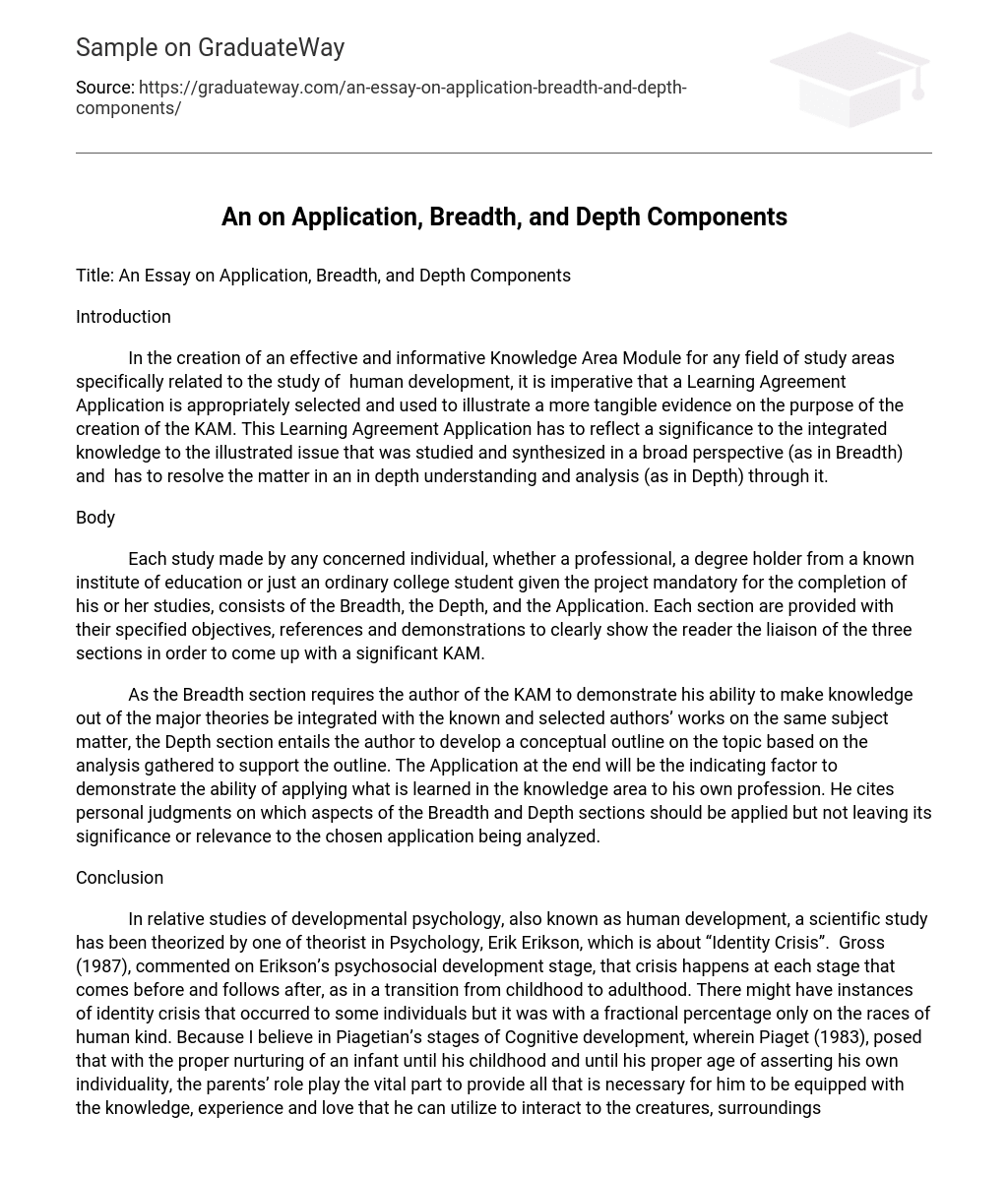Title: An Essay on Application, Breadth, and Depth Components
Introduction
In the creation of an effective and informative Knowledge Area Module for any field of study areas specifically related to the study of human development, it is imperative that a Learning Agreement Application is appropriately selected and used to illustrate a more tangible evidence on the purpose of the creation of the KAM. This Learning Agreement Application has to reflect a significance to the integrated knowledge to the illustrated issue that was studied and synthesized in a broad perspective (as in Breadth) and has to resolve the matter in an in depth understanding and analysis (as in Depth) through it.
Body
Each study made by any concerned individual, whether a professional, a degree holder from a known institute of education or just an ordinary college student given the project mandatory for the completion of his or her studies, consists of the Breadth, the Depth, and the Application. Each section are provided with their specified objectives, references and demonstrations to clearly show the reader the liaison of the three sections in order to come up with a significant KAM.
As the Breadth section requires the author of the KAM to demonstrate his ability to make knowledge out of the major theories be integrated with the known and selected authors’ works on the same subject matter, the Depth section entails the author to develop a conceptual outline on the topic based on the analysis gathered to support the outline. The Application at the end will be the indicating factor to demonstrate the ability of applying what is learned in the knowledge area to his own profession. He cites personal judgments on which aspects of the Breadth and Depth sections should be applied but not leaving its significance or relevance to the chosen application being analyzed.
Conclusion
In relative studies of developmental psychology, also known as human development, a scientific study has been theorized by one of theorist in Psychology, Erik Erikson, which is about “Identity Crisis”. Gross (1987), commented on Erikson’s psychosocial development stage, that crisis happens at each stage that comes before and follows after, as in a transition from childhood to adulthood. There might have instances of identity crisis that occurred to some individuals but it was with a fractional percentage only on the races of human kind. Because I believe in Piagetian’s stages of Cognitive development, wherein Piaget (1983), posed that with the proper nurturing of an infant until his childhood and until his proper age of asserting his own individuality, the parents’ role play the vital part to provide all that is necessary for him to be equipped with the knowledge, experience and love that he can utilize to interact to the creatures, surroundings and the people around him.
References
Gross, F. L. (1987). Introducing Erik Erikson: An invitation to his thinking. Lanham, MD: University Press of America. p. 39.
Piaget, J. (1983). Piaget’s theory. In P. Mussen (ed.), Handbook of Child Psychology. 4th edition. Vol. 1. New York, NY: Wiley.





